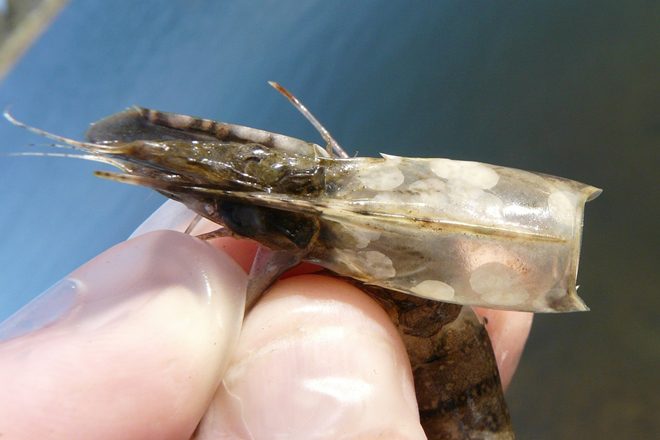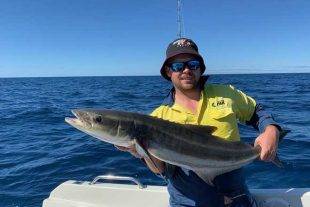WHITE spot disease movement restrictions are in place to stop the spread of the virus that causes white spot disease and help protect Queensland’s natural waterways.
Raw prawns, yabbies and marine worms cannot be moved out of the white spot disease movement restriction area. These restrictions are in place from Caloundra to the NSW border and west to Ipswich. They also apply to uncooked, frozen crustaceans because freezing does not destroy the virus. The virus that causes white spot disease does not affect humans and prawns are safe to eat.
What is white spot disease?
White spot disease affects crustaceans such as prawns, crabs, lobsters and yabbies and when found in high-intensity production areas such as prawn farms, white spot disease results in the rapid mortality of prawns. The disease was first detected in prawn farms along the Logan River south of Brisbane in December 2016. It was then found in prawn and crab samples collected from the Logan River, Brisbane River, Moreton Bay and Deception Bay.
What is being done to stop the disease?
Biosecurity Queensland has a dedicated White Spot Disease Program in place focused on surveillance as well as prevention and control. The aim is to eradicate white spot disease in Queensland and return Australia to a white spot-free zone. Movement restrictions have been put in place to help stop the disease spreading. While prawns and crabs do move around naturally, the most likely way it will spread long distances is through human assistance.
For this reason, it is crucial raw prawns, crabs and yabbies are not moved out of the area. Testing is under way for the virus that causes white spot disease in Moreton Bay and the Logan and Brisbane rivers. This follows testing in September 2017 that returned negative results for the virus that causes white spot disease. These results are encouraging and indicate the disease may not be established in Moreton Bay and has not spread into other parts of Queensland. Two years of consecutively negative test results are required in order to prove the disease is no longer in Australian waterways.
What does white spot disease look like?
Prawns with white spot disease may have a loose shell with numerous white spots on the inside surface of the shell and a pink to red discolouration. However, please note infected prawns and yabbies may not display any symptoms and white spots may appear for a range of reasons including freezer burn and bacterial and fungal infections. For more information on white spot disease, visit daf.qld.gov.au/WSD or call the Department of Agriculture and Fisheries Customer Service Centre on 13 25 23.
 Bush 'n Beach Fishing Magazine Location reports & tips for fishing, boating, camping, kayaking, 4WDing in Queensland and Northern NSW
Bush 'n Beach Fishing Magazine Location reports & tips for fishing, boating, camping, kayaking, 4WDing in Queensland and Northern NSW








